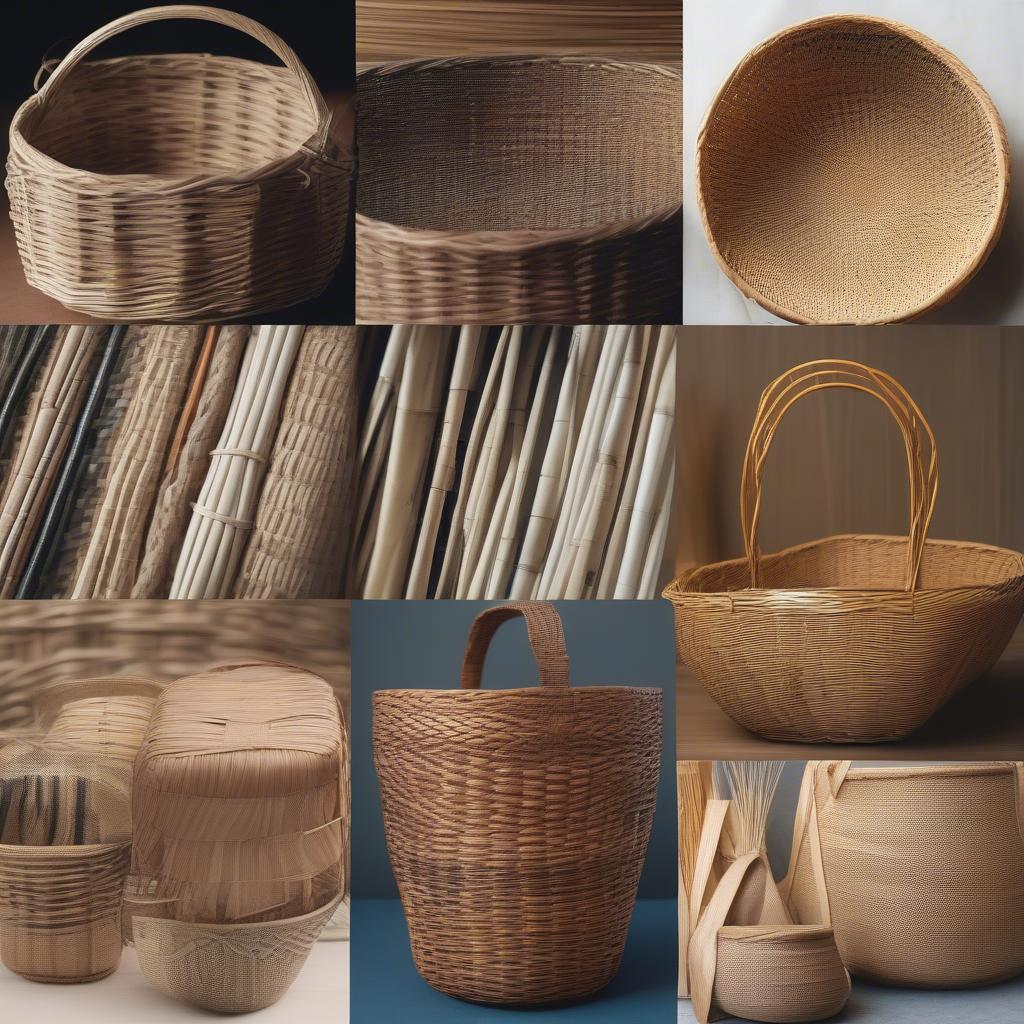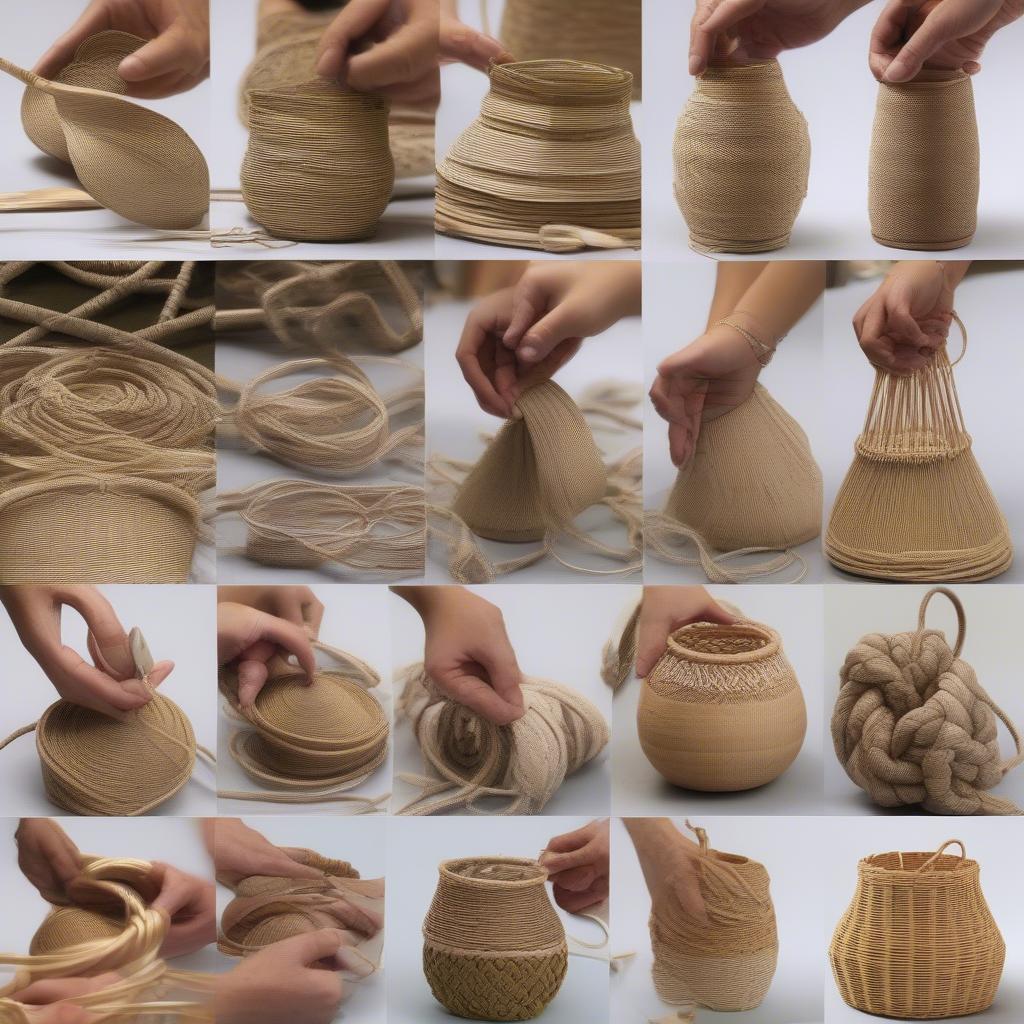Basket Weaving
Exploring Basket Material Weaving: A Comprehensive Guide
Basket Material Weaving is a timeless craft that transforms natural materials into functional and beautiful objects. From sturdy wicker baskets to intricate rattan creations, the art of basket weaving offers a diverse range of possibilities for both hobbyists and professionals. This guide delves into the world of basket material weaving, exploring various materials, techniques, and the rich history behind this ancient craft. After reading this, you will have a comprehensive understanding of basket weaving materials and techniques.
A World of Weaving Materials: From Reed to Raffia
Choosing the right material is crucial for successful basket weaving. Each material possesses unique properties that influence the final product’s durability, flexibility, and aesthetic appeal. Let’s explore some popular choices:
- Wicker: Often used as a catch-all term, wicker actually refers to the weaving process, not a specific material. Wicker baskets can be made from a variety of materials, including willow, reed, and rattan.
- Rattan: A strong and flexible vine native to Southeast Asia, rattan is prized for its durability and ability to be bent into intricate shapes. It’s an excellent choice for creating furniture and larger baskets. basket weaving supplies nz provides further resources for acquiring materials.
- Reed: A tall, grass-like plant, reed is another popular basket weaving material, especially for creating traditional woven baskets and mats. Its natural variations in color add a rustic charm to finished pieces.
- Willow: Known for its flexibility and strength, willow is a classic basket weaving material. Its slender branches can be easily woven into intricate patterns.
- Raffia: Derived from the raffia palm tree, this fiber is known for its strength and pliability. It’s often used to create colorful and decorative baskets.
- Bamboo: A fast-growing grass, bamboo offers excellent strength and sustainability. Its rigid structure makes it suitable for larger basketry projects and furniture.
 Variety of Basket Weaving Materials
Variety of Basket Weaving Materials
Basket Weaving Techniques: A Journey Through Time
Basket weaving techniques have been passed down through generations, evolving into a rich tapestry of methods and styles. From simple twining to complex coiling, each technique offers unique possibilities for creating distinctive baskets.
- Coiling: This technique involves wrapping a foundation material, such as a rope or bundle of grasses, with a thinner, more flexible material. newspaper basket weaving materials can also be a viable option for this technique. Coiled baskets are known for their strength and durability.
- Twining: This technique involves interweaving two or more flexible materials over and under a stationary warp. Twining creates a flexible and lightweight fabric ideal for baskets and mats.
- Plaiting: Similar to braiding, plaiting involves interlacing three or more strands of material to create a flat, woven surface. This technique is often used to create decorative elements for baskets.
- Wicker Weaving: As mentioned earlier, wicker refers to the process, not the material. Wicker weaving often involves weaving soaked reeds or other flexible materials around a frame to create the desired shape.
 Comparison of Basket Weaving Techniques
Comparison of Basket Weaving Techniques
Basket Material Weaving: A Sustainable Craft
In today’s world, sustainability is more important than ever. Basket material weaving offers a sustainable alternative to mass-produced goods. Many basket weaving materials are renewable and biodegradable, reducing environmental impact. basket weaving grasses are an excellent example of sustainable material.
What are the Benefits of Using Natural Basket Weaving Materials?
Natural materials offer several advantages:
- Eco-friendly: Biodegradable and renewable, they minimize environmental impact.
- Durability: Many natural materials, such as rattan and willow, are incredibly strong and long-lasting.
- Aesthetic Appeal: Natural materials possess a unique beauty and character that enhances the visual appeal of woven products.
“Choosing sustainable materials not only benefits the environment but also adds a unique character to the finished product,” says Jane Doe, a renowned basket weaver with over 20 years of experience.
basket weaving materials ireland offers more insight on sourcing materials and sustainable practices.
Basket Material Weaving: FAQ
1. What is the best material for beginners?
Reed and raffia are good starting points due to their flexibility and ease of use.
2. Where can I find basket weaving supplies?
Craft stores, online retailers, and local artisans often sell basket weaving materials.
3. How long does it take to learn basket weaving?
The learning curve varies depending on the complexity of the technique. Basic techniques can be learned relatively quickly, while more advanced methods require practice and patience.
4. What are some common uses for woven baskets?
Woven baskets can be used for storage, decoration, gift-giving, and even as fashion accessories.
Conclusion
Basket material weaving is more than just a craft; it’s an art form that connects us to nature and tradition. From the simple elegance of a willow basket to the intricate beauty of a rattan chair, the possibilities are endless. By exploring the diverse world of basket weaving materials and techniques, you can create beautiful and functional pieces that reflect your unique style and creativity. basket weaving materials crossword might be a fun way to test your knowledge. Remember, the key to mastering basket material weaving lies in understanding the unique properties of each material and choosing the right technique for your project.
Other helpful articles on our website include:
- Guide to different types of basket weaving
- History of basket weaving around the world
If you need any assistance, please don’t hesitate to contact us at Hanoi, Vietnam or Tech Avenue, Suite 12, San Francisco, CA 94105, USA. We have a 24/7 customer service team available to help.
